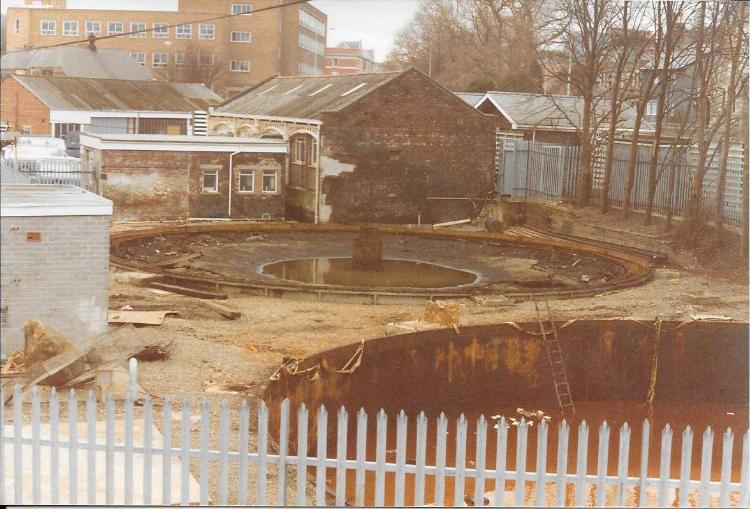Bangor Civic Society | Message Board & Forum
› General
›
City, Buildings, Businesses and Land History
Gas works
|
|
This post was updated on .
The Gas Works (from GAT)
The need for gas in Bangor arose out of a need for better lighting of the streets, which, because of the unrestricted building, lack of surfacing, dumping of rubble and refuse and lack of public amenities had become a hazard at night. The first use of gas in the city was in 1822, by an ironmonger on the High Street, Robert Jones, who installed a small plant in his yard to light his shop (Ingram 1952, 40). The first public street lighting was by oil lamps, installed in 1830 but was not very successful (ibid 39). The first gas works of commercial size in the area was installed at Caernarfon in 1833, along the railway at the slate quay, where it could easily be supplied with coal. The need for street lighting in Bangor, and the demand provided by areas of dense housing, was sufficient reason to ensure the construction of a works within the city. The Bangor gas works were established by an Irishman, James Smyth Scott who began construction in the field at the back of Garden Square in September 1843, to the dismay of the local inhabitants (Ingram 1952, 40). The gas works consisted of ...‘a gasometer, and all other fittings, buildings and offices necessary and essential to the manufacture and preparation of Gas for supplying the Town and liberties of Bangor.’ (UWB Ms. 10068, Gill 1937, 2). The gas works were conveniently situated to supply the nearby housing and High Street (Figs 10 and 11). It was also adjoining a route that had been proposed by George Stephenson for a railway through Bangor, which would have been able to supply coal, although the railway eventually took a different route. The Bangor Gas and Coke Company was established in 1845 with ownership in shares divided between Scott and several local businessmen. Initially, up to 1849 its only purpose was to supply 40 street lamps. At the same time as constructing the gas works the enterprising Scott also constructed a reservoir above Glanadda to supply the town with clean drinking water. This was something that was sorely needed because the few private wells and polluted Afon Adda were inadequate. The health of the town was poor because of the lack of a sewerage system, the lack of public refuse collection, overcrowding and the custom of many households of keeping pigs in their yards. Toxic residues from the gas works were also dumped in the river, which sometimes flooded, contaminating the nearby houses. The need for water in the town eventually led to an Act for the establishment of the private Bangor Waterworks Co. in 1854, which was later merged with the gas works to form the Bangor Gas and Water Co. (Jones 1986). After problems with the supply, general ill-health, cholera and typhoid outbreaks, the company was eventually bought out by the Town Council in 1878, which immediately started to improve both the gas and water works (UWB Ms. 10068). The increasing demand for gas for heating and cooking led to the need for a larger works, which was eventually built on the north side of the Adda between 1878 and 1890 (Fig. 11). The old gas works were demolished between 1890 and 1900 (Fig. 12). The western part of the site was used for a chapel, Capel Penuel. The gas works building immediately east of it was probably the retort house with its banks of ovens and it is interesting to think of sermons being preached about hellfire with a close approximation to it working busily on the other side of the wall. Demand for gas continued to increase with the growth of the town, and the increased use for cooking and heating. By 1895 the new gas works could not cope with demand and the council decided to construct an electricity generating plant, which would be cheaper than building yet another new gas works. This was constructed on the east side of Dean Street. The electricity works was run by two steam generators fuelled by a rubbish incinerator. This was a great success, but despite this the demand for gas still increased and the gas works continued in use until the 1960s when natural gas became available. 
|
«
Return to City, Buildings, Businesses and Land History
|
1 view|%1 views
| Free forum by Nabble | Edit this page |

